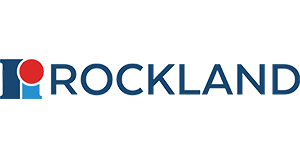CIITA Antibody
CIITA Antibody
SKU
ROC100-401-192
Packaging Unit
100 µL
Manufacturer
Rockland
Availability:
loading...
Price is loading...
Application Note: Anti-CIITA is suitable for use in ELISA, western blot. Specific conditions for reactivity should be optimized by the end user.
Concentration Value: 90 mg/mL
ELISA Dilution: 1:5,000 - 1:25,000
Western Blot Dilution: 1:500 - 1:3,000
General Disclaimer Note: This product is for research use only and is not intended for therapeutic or diagnostic applications. Please contact a technical service representative for more information. All products of animal origin manufactured by Rockland Immunochemicals are derived from starting materials of North American origin. Collection was performed in United States Department of Agriculture (USDA) inspected facilities and all materials have been inspected and certified to be free of disease and suitable for exportation. All properties listed are typical characteristics and are not specifications. All suggestions and data are offered in good faith but without guarantee as conditions and methods of use of our products are beyond our control. All claims must be made within 30 days following the date of delivery. The prospective user must determine the suitability of our materials before adopting them on a commercial scale. Suggested uses of our products are not recommendations to use our products in violation of any patent or as a license under any patent of Rockland Immunochemicals, Inc. If you require a commercial license to use this material and do not have one, then return this material, unopened to: Rockland Inc., P.O. BOX 5199, Limerick, Pennsylvania, USA.
Immunogen: This antibody was prepared from whole rabbit serum produced by repeated immunizations with a synthetic peptide corresponding to a region near the N-terminal end of the human CIITA gene conjugated to Keyhole Limpet Hemocyanin (KLH).
Physical State: Liquid (sterile filtered)
Purity and Specificity: This product was prepared from monospecific antiserum by delipidation and defibrination.
Background: MHC class II transactivator (CIITA) is essential for transcriptional activity of the HLA class II promoter; activation is via the proximal promoter. No DNA binding of in vitro translated CIITA was detected. It may act in a coactivator-like fashion through protein-protein interactions by contacting factors binding to the proximal MHC class II promoter, to elements of the transcription machinery, or both. Alternatively, it may activate HLA class II transcription by modifying proteins that bind to the MHC class II promoter. Also it mediates enhanced MHC class I transcription; the promoter element requirements for CIITA-mediated transcription are distinct from those of constitutive MHC class I transcription, and CIITA can functionally replace TAF1 at these genes. It exhibits intrinsic GTP-stimulated acetyltransferase activity, exhibits serine/threonine protein kinase activity, and can phosphorylate the TFIID component TAF7, the RAP74 subunit of the general transcription factor TFIIF, histone H2B at 'Ser-37' and other histones (in vitro).
Low Endotoxin: No
Other: User Optimized
Concentration Value: 90 mg/mL
ELISA Dilution: 1:5,000 - 1:25,000
Western Blot Dilution: 1:500 - 1:3,000
General Disclaimer Note: This product is for research use only and is not intended for therapeutic or diagnostic applications. Please contact a technical service representative for more information. All products of animal origin manufactured by Rockland Immunochemicals are derived from starting materials of North American origin. Collection was performed in United States Department of Agriculture (USDA) inspected facilities and all materials have been inspected and certified to be free of disease and suitable for exportation. All properties listed are typical characteristics and are not specifications. All suggestions and data are offered in good faith but without guarantee as conditions and methods of use of our products are beyond our control. All claims must be made within 30 days following the date of delivery. The prospective user must determine the suitability of our materials before adopting them on a commercial scale. Suggested uses of our products are not recommendations to use our products in violation of any patent or as a license under any patent of Rockland Immunochemicals, Inc. If you require a commercial license to use this material and do not have one, then return this material, unopened to: Rockland Inc., P.O. BOX 5199, Limerick, Pennsylvania, USA.
Immunogen: This antibody was prepared from whole rabbit serum produced by repeated immunizations with a synthetic peptide corresponding to a region near the N-terminal end of the human CIITA gene conjugated to Keyhole Limpet Hemocyanin (KLH).
Physical State: Liquid (sterile filtered)
Purity and Specificity: This product was prepared from monospecific antiserum by delipidation and defibrination.
Background: MHC class II transactivator (CIITA) is essential for transcriptional activity of the HLA class II promoter; activation is via the proximal promoter. No DNA binding of in vitro translated CIITA was detected. It may act in a coactivator-like fashion through protein-protein interactions by contacting factors binding to the proximal MHC class II promoter, to elements of the transcription machinery, or both. Alternatively, it may activate HLA class II transcription by modifying proteins that bind to the MHC class II promoter. Also it mediates enhanced MHC class I transcription; the promoter element requirements for CIITA-mediated transcription are distinct from those of constitutive MHC class I transcription, and CIITA can functionally replace TAF1 at these genes. It exhibits intrinsic GTP-stimulated acetyltransferase activity, exhibits serine/threonine protein kinase activity, and can phosphorylate the TFIID component TAF7, the RAP74 subunit of the general transcription factor TFIIF, histone H2B at 'Ser-37' and other histones (in vitro).
Low Endotoxin: No
Other: User Optimized
| SKU | ROC100-401-192 |
|---|---|
| Manufacturer | Rockland |
| Manufacturer SKU | 100-401-192 |
| Package Unit | 100 µL |
| Quantity Unit | STK |
| Reactivity | Human |
| Clonality | Polyclonal |
| Isotype | Antiserum |
| Human Gene ID | 4261 |
| Host | Rabbit |
| Conjugate | Unconjugated |
| Product information (PDF) | Download |
| MSDS (PDF) |
|

 Deutsch
Deutsch







